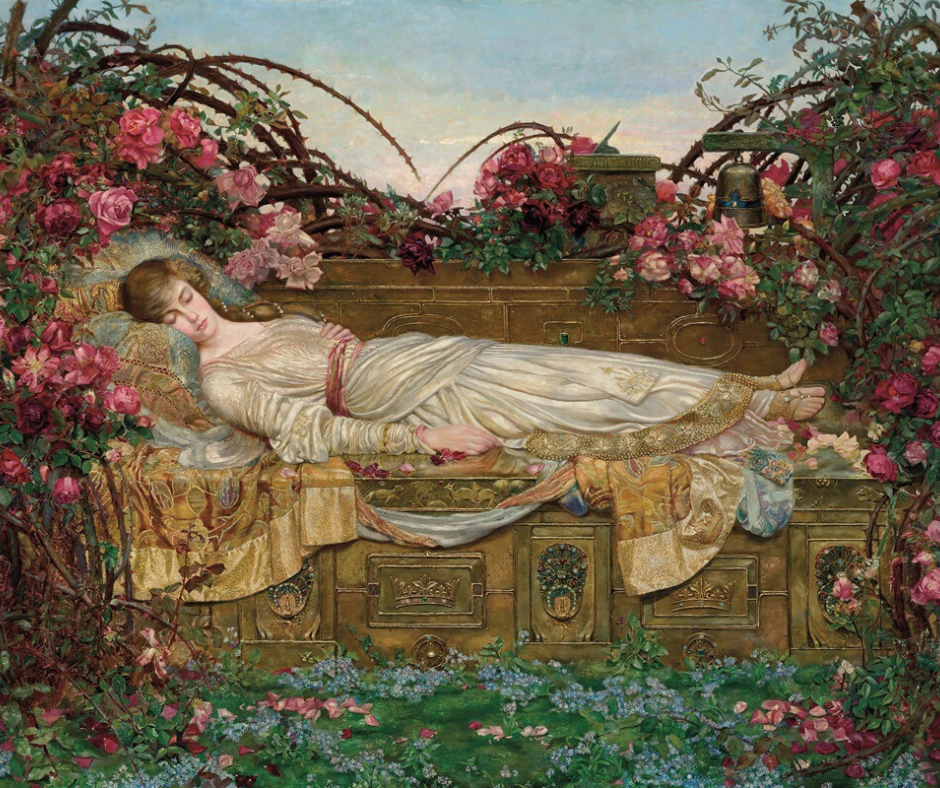

Pieces from Fashion History in Honor of the 2024 Met Gala Theme
Summary
Reflection Questions
Journal Prompt
Often described as Fashion’s biggest night, the Met Gala plays host to pop culture icons and pieces of costume history. This year’s theme is Sleeping Beauties: Reawakening Fashion. In honor of the Costume Institute’s collection and the 2024 Met Gala theme, let’s pore over twelve pieces of fashion history from the Metropolitan Museum of Art.
New to the Met Gala? Here’s a Primer
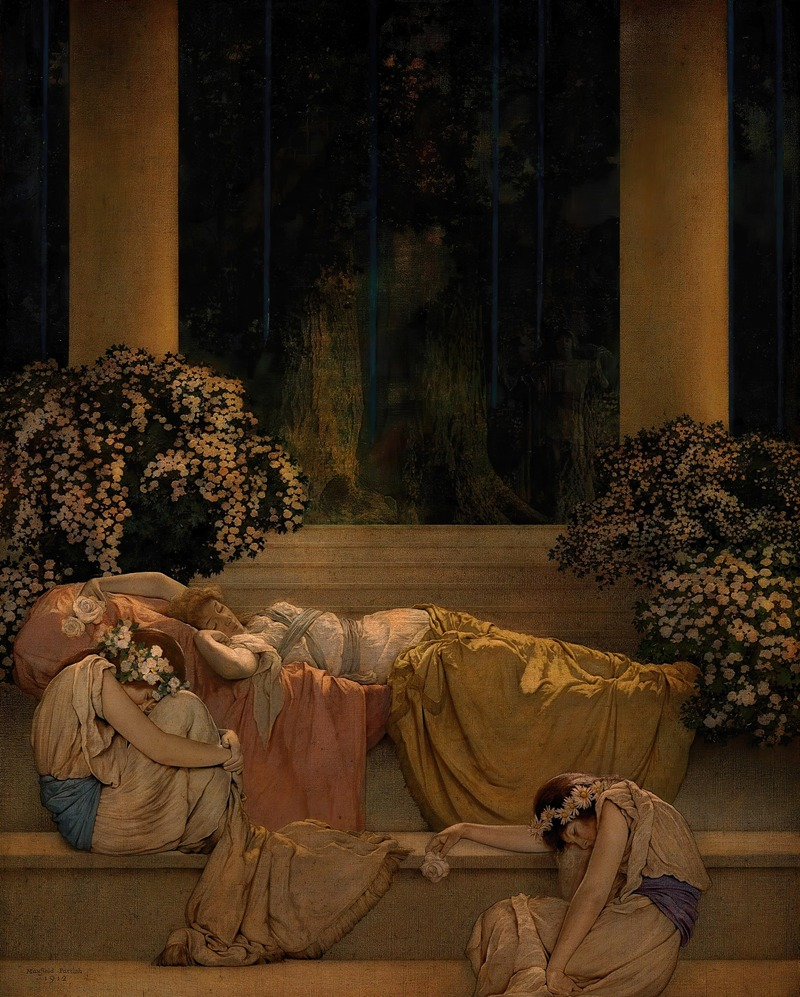

The Met Gala, officially known as the Costume Institute Gala, is an annual fundraising event for the Metropolitan Museum of Art’s Costume Institute in New York City. It marks the opening of the Costume Institute’s annual fashion exhibit, which features incredible pieces from the Costume Institute’s permanent collection. As a note, the Costume Institute was actually renamed the Anna Wintour Costume Center in 2014.
Each year, the event features a theme that attendees are encouraged to embrace in their fashion choices (as long as they meet the gala dress code requirements). This often results in extravagant and innovative attire on the red carpet. The Costume Institute benefit is widely regarded as one of the most significant and glamorous occasions in the fashion industry, attracting celebrities, designers, and cultural icons.
This Year’s Theme
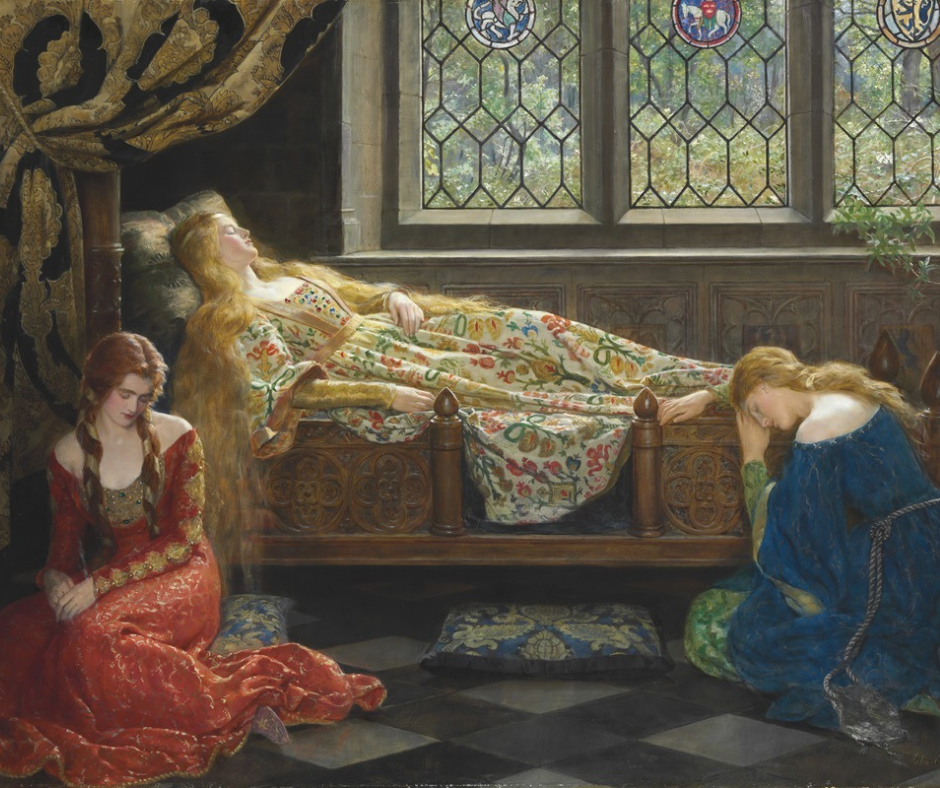

The theme for the 2024 Met Gala is “Sleeping Beauties: Reawakening Fashion.” This theme seeks to explore notions of rebirth and renewal, using fashion’s impermanence and transformation as metaphors. The accompanying exhibition will feature garments that span 400 years, focusing on their multisensory aspects—how they feel, move, sound, smell, and interact when worn. This concept aims to reanimate historical and contemporary fashions by reconnecting with their dynamic, vibrant original states through various technologies
In honor of the Costume Institute’s new exhibition and the 2024 Met Gala, below are fifteen pieces from the museum’s collection of costumes, jewelry, and historical fashion.
12 Fashion Pieces from History in Honor of the 2024 Met Gala
Etruscan Jewelry Set from the 5th Century BCE
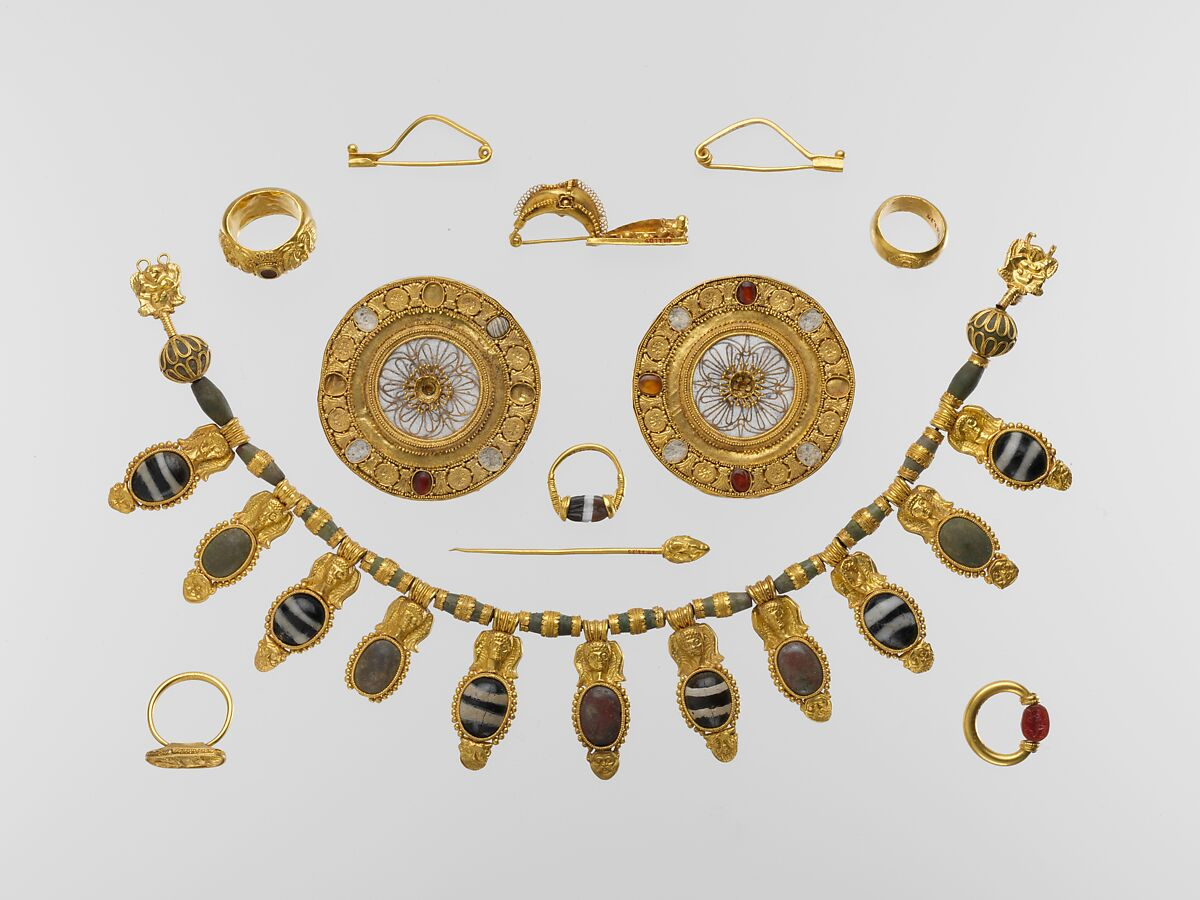

Like the Met’s set pictured above, Etruscan jewelry from this period is adored for its craftsmanship and ornate design, reflecting the wealth and artistic skills of this ancient civilization. These pieces often include intricate filigree and granulation techniques, where tiny beads and threads of gold are meticulously applied to create detailed patterns. Common motifs include animals, floral designs, and mythological figures, which were believed to offer protection and communicate status. Materials such as gold, precious stones, and amber were commonly used, showcasing the Etruscans’ extensive trade networks and cultural influences.
Etruscan jewelry from the 5th century BCE served multiple purposes. It was a display of wealth and social status, as the materials and craftsmanship required were costly. Jewelry also had religious and cultural significance, often worn as protective amulets or as part of ritualistic attire. Additionally, these pieces were used to signify identity and affiliation, indicating membership in certain families or social groups. The intricate designs and motifs often had symbolic meanings, connected to Etruscan beliefs and mythology.
Robe à la Française British Court Dress from 1750


In the 1750s, British court dresses were heavily influenced by the French court, especially by styles like the robe à la française. This elegant style was known for its fitted bodice and full, flowing pleated skirt that extended into a train, often worn with a formal petticoat. The dresses showcased luxurious fabrics like silk and were adorned with elaborate lace, embroidery, and ribbons, reflecting the opulence of Versailles. The sartorial connection underscored the cultural and political ties between the two courts, with British fashion often mirroring the trends set by the French aristocracy.
19th Century German Pendant of Triton Riding a Unicorn
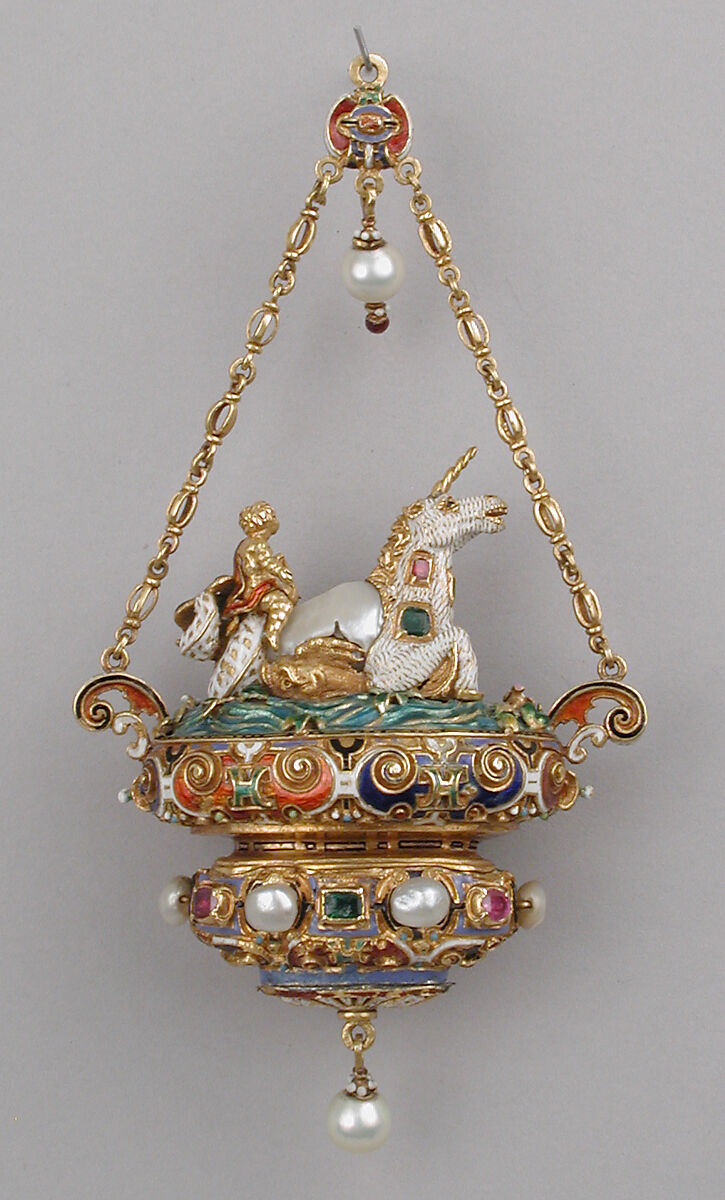

Reinhold Vasters, a German designer, crafted the “Pendant with a Triton Riding a Unicorn-like Sea Creature” between 1870 and 1895. This ornate piece features a blend of mythical elements, depicting Triton, a classical figure, astride a fantastical sea creature reminiscent of a unicorn. The pendant exemplifies this era’s fascination with mythological and imaginative themes, showcasing Vasters’ skill in intricate metalwork and possibly incorporating materials like enamel and gemstones. This piece is currently on view at the Met.
Minimalist French Evening Dress from 1804
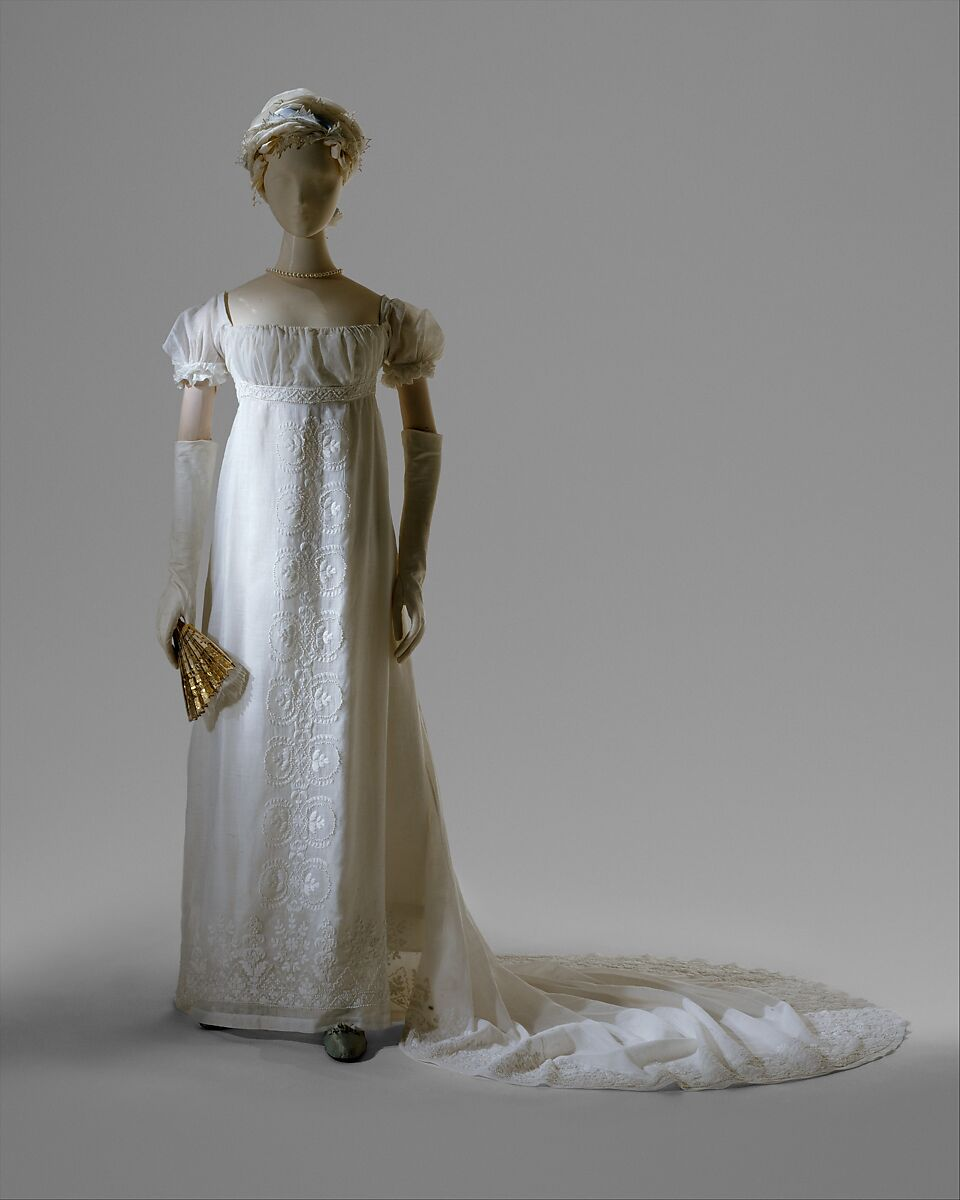

The Met links this French evening dress and similar styles to the wedding of fashion-forward Elizabeth Patterson and Jerome Bonaparte. On December 24, 1803, Jerome Bonaparte, Napoleon’s brother, married American Elizabeth Patterson. Elizabeth, celebrated for her beauty and style, wore a strikingly simple muslin and lace dress, described as so delicate that it could be folded into a gentleman’s pocket.
This minimalist fashion starkly contrasted with the previous elaborate attire and hinted at early 19th-century trends towards more simplistic ‘Grecian’ styles. Although initially thought to be her wedding dress, the gown discussed likely dates from 1804, following shifts in fashion to vertical white embroidery on sheer fabric.
With its gossamer fabric, puffy sleeves, and princess train, we think this dress is perfect for the Met Gala’s Sleeping Beauties dress code.
East Germanic Bow Brooch from 400 AD


East Germanic bow brooches from 400–450 AD like the piece pictured above are distinctive artifacts from the Migration Period in Europe. These brooches, primarily used as functional dress fasteners, are notable for their elaborate designs which often feature intricate patterns, animal motifs, and symbolic decorations.
Made primarily from bronze, these brooches highlight the craftsmanship and artistic abilities of the East Germanic peoples. This brooch, however, is made from silver, gold, and garnet. They serve as important archaeological evidence of the cultural and artistic exchanges that occurred during this era as Germanic tribes moved across Europe.
Japanese Cuirass of a Dō-maru from 1550
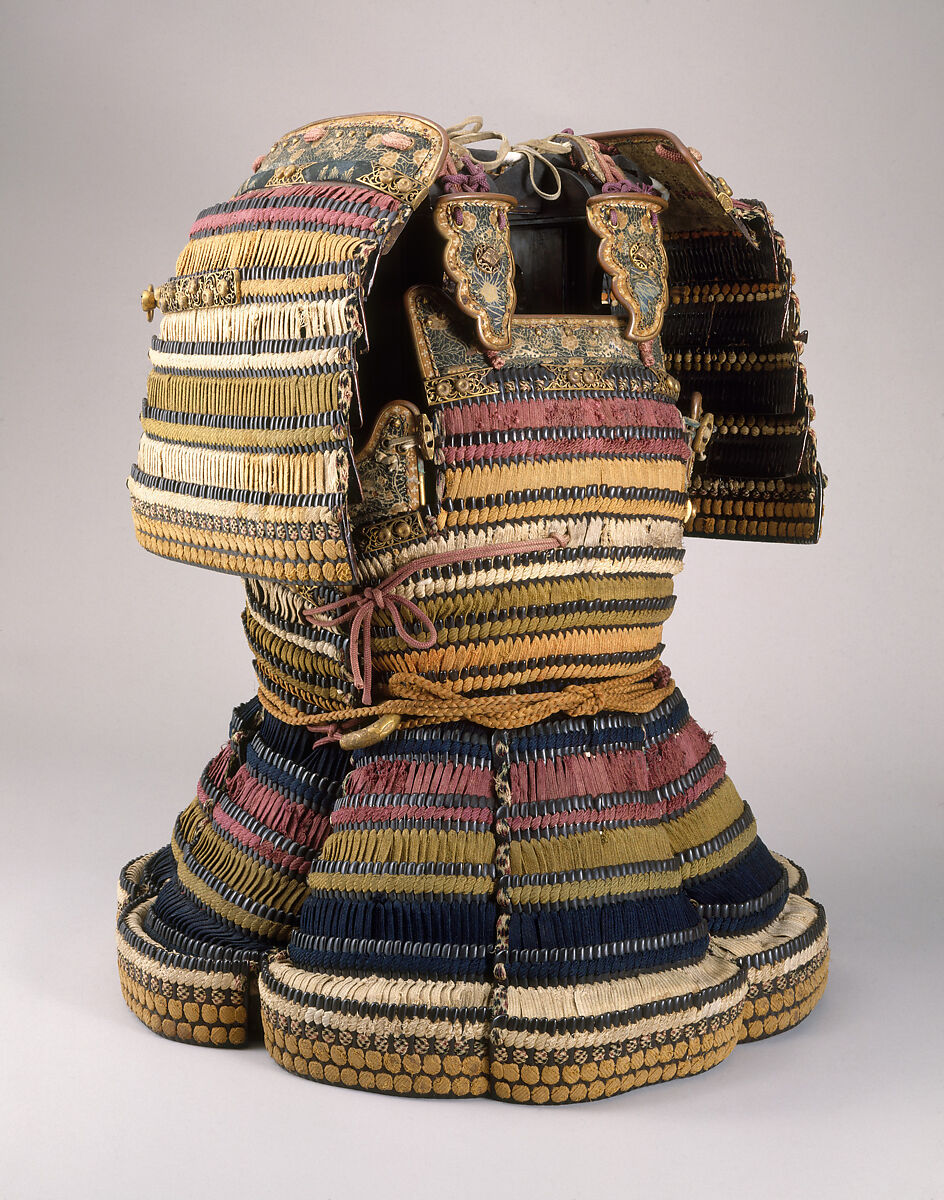

In 16th-century Japan, a period riddled with warfare and political instability, armor evolved significantly to suit the changing nature of combat. The traditional, bulky Ō-yoroi armor, used by high-ranking samurai who fought on horseback, was replaced by lighter, more form-fitting Dō-maru armor, designed for increased mobility necessary for foot soldiers. Among those who appreciated such advancements was Date Masamune, a warlord who valued armor highly and rewarded his retainers with it rather than swords.
One notable moment was in 1594 when Masamune gifted Dō-maru armor to his retainer Shiraishi Bungo for quelling a revolt and proving Masamune’s loyalty to Toyotomi Hideyoshi, the ruling power at the time. This specific armor, preserved through the centuries, exemplifies the utilitarian yet sophisticated military attire of the late Muromachi period, reflecting the era’s understated aesthetic.
1880s Dinner Dress by Designer Mme. Grapanche


Dinner dresses from the period of 1884–86 typically showcased the opulent style of the late Victorian era. These dresses often featured luxurious fabrics such as silk and velvet, accentuated with elaborate embellishments like lace, beading, and ruffles. The silhouette was characterized by a fitted bodice, a cinched waist, and a full skirt, sometimes supported by a bustle to emphasize the back.
At the time, there was a joke that these bustles could support an entire tea service. While bustles were designed to support the heavy fabric of the gown and maintain its shape, particularly enhancing the rear silhouette, they were not intended nor capable of supporting significant weight like a tea service. This notion might stem from satirical comments or illustrations of the time, which often exaggerated contemporary fashion trends to critique their impracticality or extravagance.
Fuel your creative fire & be a part of a supportive community that values how you love to live.
subscribe to our newsletter
Italian Gauntlet from 1580
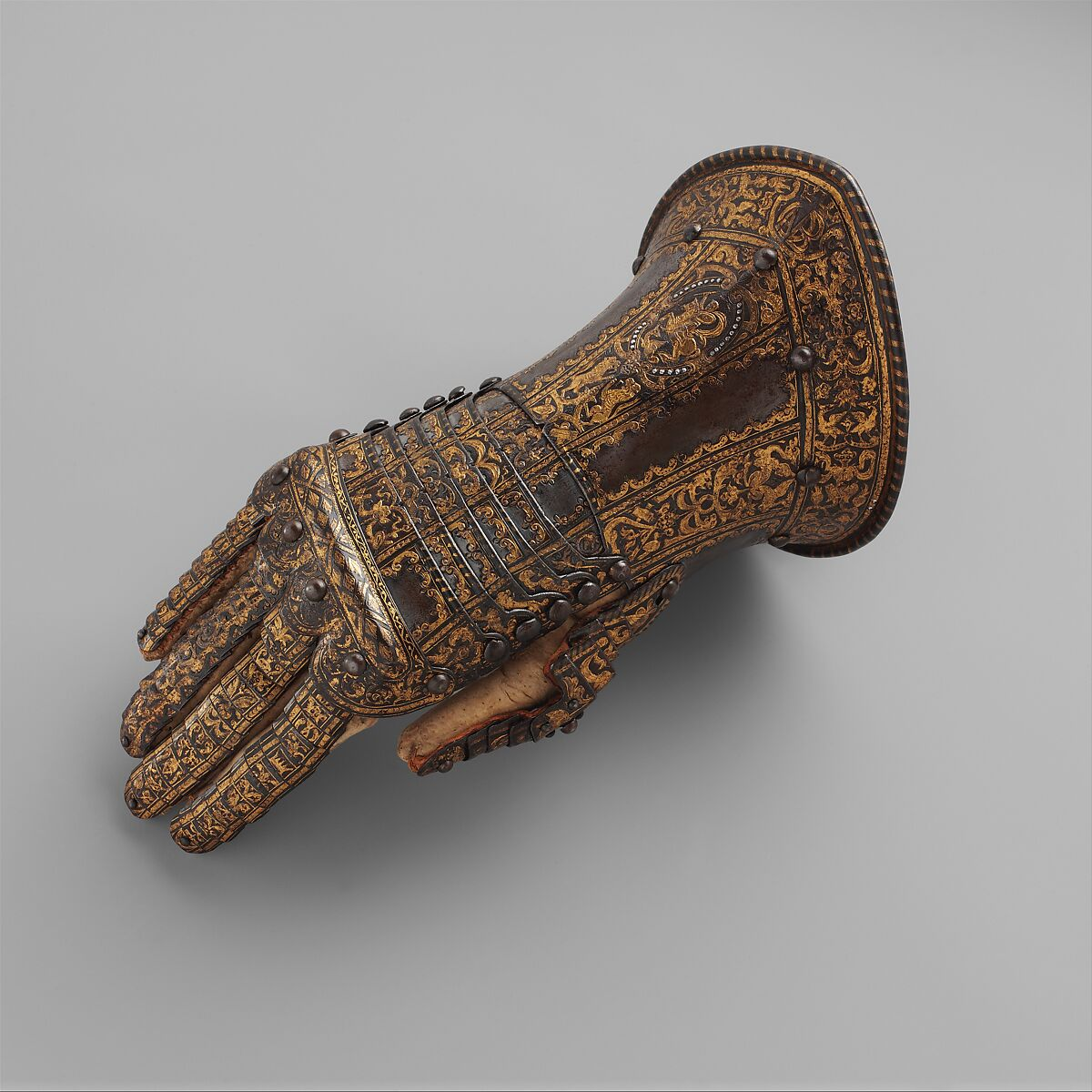

The gauntlet pictured above—which was part of the armor of Don Alonzo Pérez de Guzman el Bueno, Count of Niebla and Duke of Medina-Sidonia—is a remarkable example of Italian craftsmanship from Milan around 1580. Made from steel, silver, gold, and leather, this piece highlights the exquisite metalwork of the period, characterized by durability and artistic detail.
Such armors were not only protective in battle but also served as symbols of status and power, often displayed in courtly and ceremonial occasions. The gauntlet itself would have been part of a larger, ornately decorated suit of armor, reflecting the high social standing of its wearer.
Italian Silk Dress from 1750
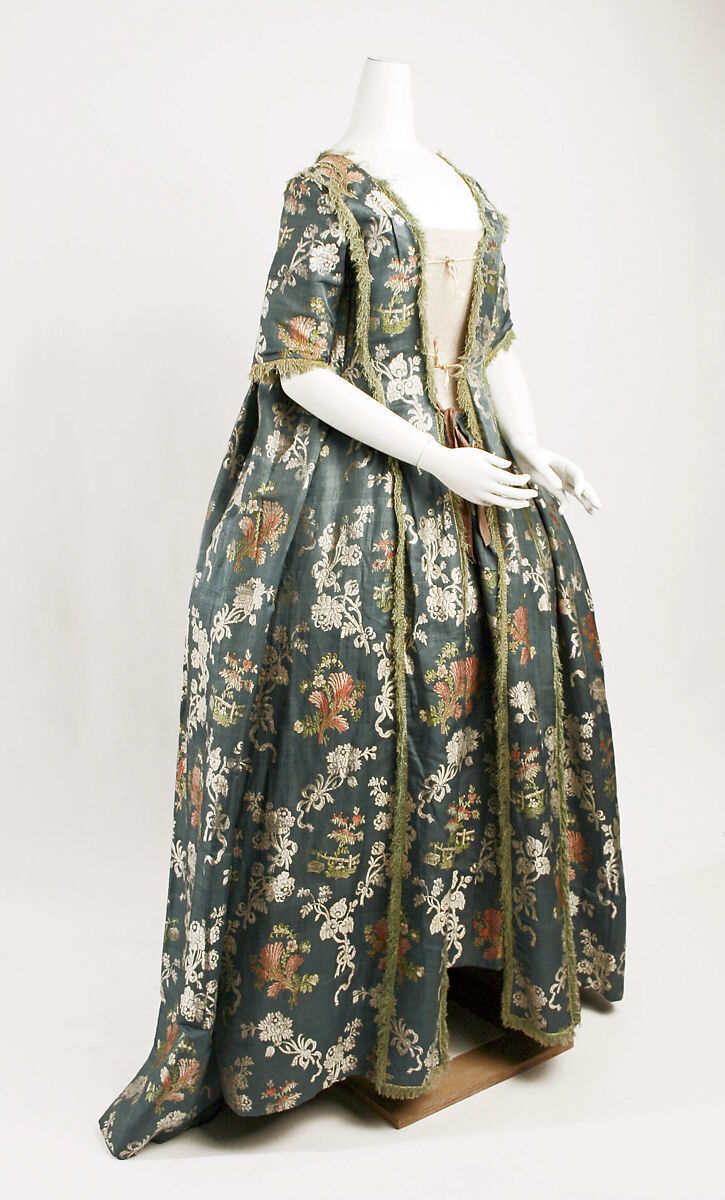

From 1750 to 1775—when the dress pictured above was crafted—, Italian women’s fashion was characterized by its elegance and adherence to the broader European trends of the time. Women often wore the robe à la française or the robe à l’anglaise, both styles influenced by French fashion. These gowns typically featured tight, corseted bodices, wide skirts supported by panniers, and rich decoration with lace, ribbons, and floral embroidery. Italian fashion, while echoing French styles, also incorporated unique regional elements that reflected local artisan traditions and materials.
Pearl, Gold, Silver, Amethyst, Glass, and Sapphire Bracelet from the Byzantine Period
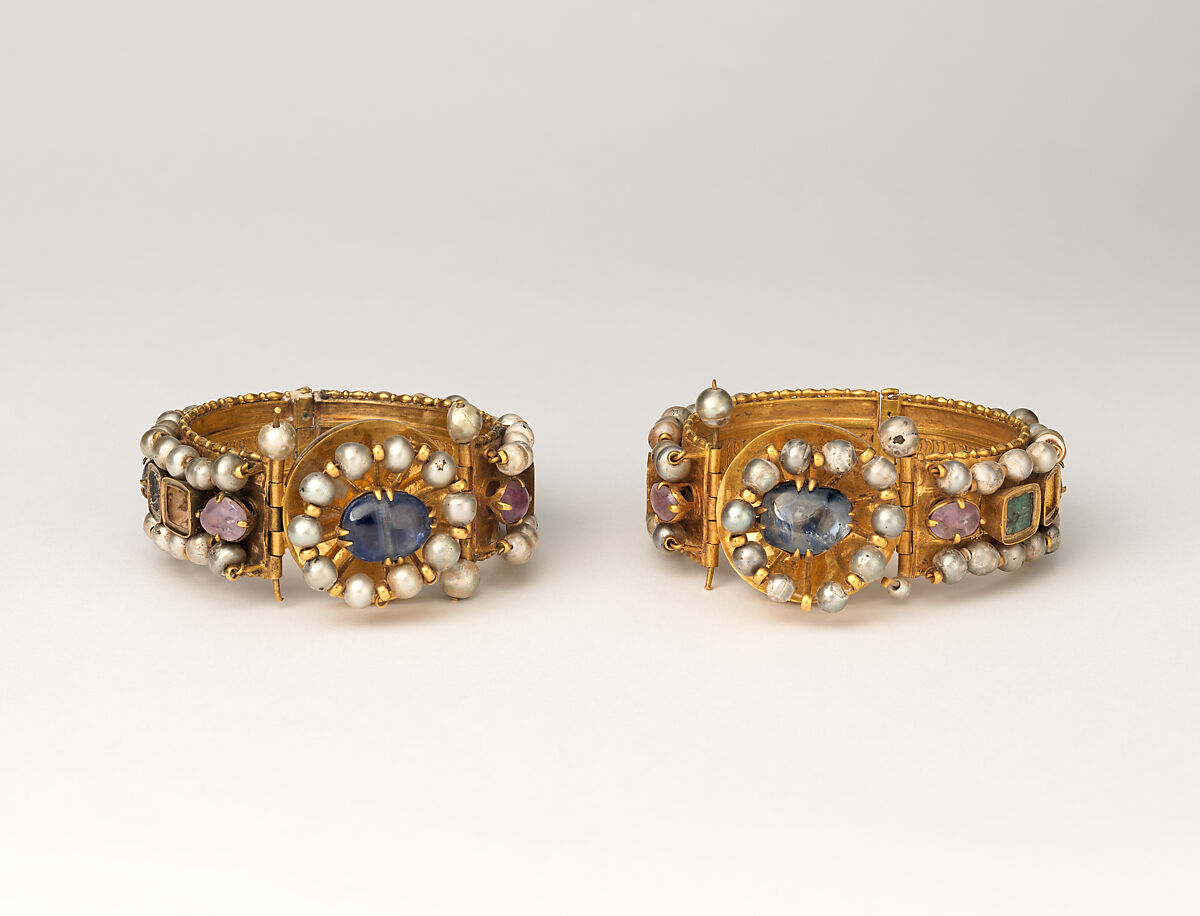

During the Byzantine period, jewelry pieces were not only decorative but also significant in expressing social status and religious devotion. Such items were typically crafted with gold and adorned with pearls and precious stones, reflecting the wealth and artistic sophistication of the Byzantine Empire.
Pearls—like those adorning the bracelet pictured above—were particularly valued for their beauty and were often associated with purity and spiritual symbolism. These luxurious accessories were worn by both men and women of the upper echelons, enhancing their attire for public appearances and religious ceremonies.
Late 16th-Century Spanish Pendant
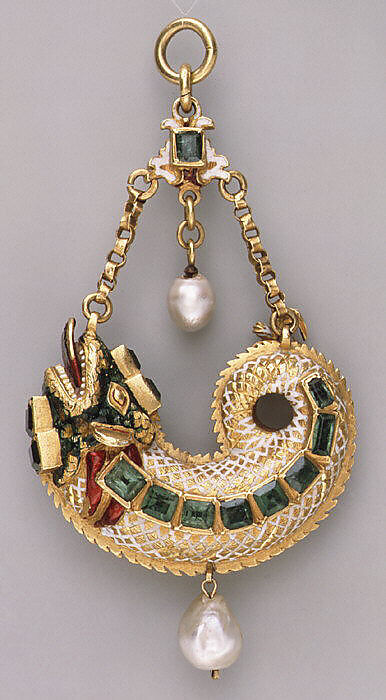

In the latter half of the 16th century, Spanish artisans began crafting pendants shaped like various sea creatures and other living beings, real and mythical. These pieces were not only decorative but also served as talismans, particularly those depicting marine life, reflecting the perils of Spain’s extensive maritime ventures essential to its empire.
The naturalistic representation of these figures was a key focus, enhanced by the lavish use of precious stones like emeralds and gold—materials largely procured from Spain’s colonial exploits. This trend highlights the intersection of art, commerce, and spirituality during that era.
Emerald Green Silk Dress from 1870s England
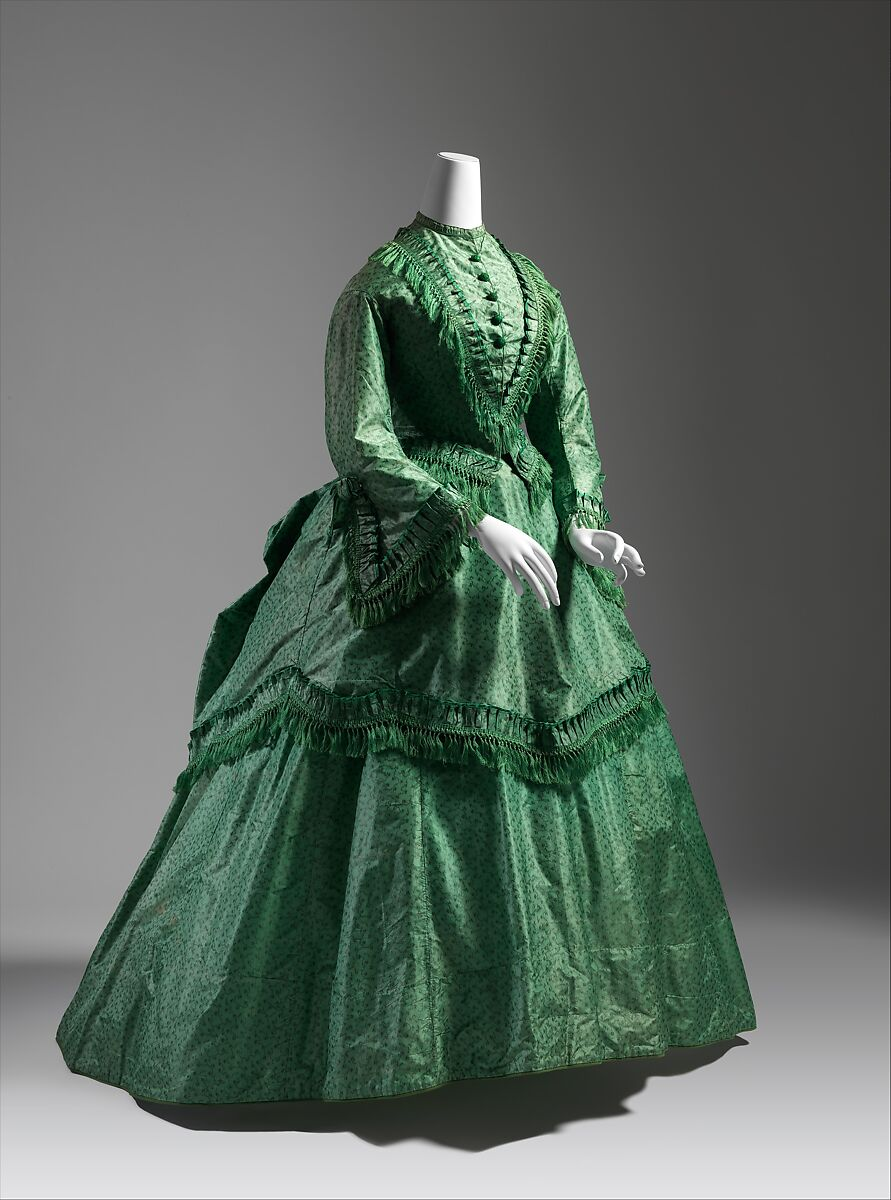

In the 1860s and 1870s, British women’s fashion featured distinct styles that evolved significantly over the decade. During the 1860s, dresses were characterized by wide crinolines at the beginning of the decade, which gradually gave way to the bustle in the late 1860s and 1870s. This period also saw the height of the bustle, which pushed skirts out at the back.
Fabrics were rich and ornate with decorations such as fringes, ribbons, and lace. The 1870s continued the trend of elaborate trimmings and high necklines, with a shift towards more tailored and fitted bodices, reflecting a more structured aesthetic compared to the voluminous styles of the earlier decade.
What Would You Wear if Invited to the 2024 Met Gala?
Let us know in the comments below!
Design Dash
Join us in designing a life you love.
-
All About Our 7-Day Focus & Flex Challenge
Sign up before August 14th to join us for the Focus & Flex Challenge!
-
Unique Baby Names Inspired by Incredible Women from History
Inspired by historic queens, warriors, artists, and scientists, one of these unusual baby names might be right for your daughter!
-
Finding a New 9 to 5: How to Put Freelance Work on a Resume
From listing relevant skills to explaining your employment gap, here’s how to put freelance jobs on your resume.
-
What is Generation-Skipping, and How Might it Affect Sandwich Generation Parents?
The emotional pain and financial strain of generation skipping can be devastating for Sandwich Generation parents.
-
Four Material Libraries Dedicated to Sustainability, Preservation, and Education
From sustainable building materials (MaterialDriven) to rare pigments (Harvard), each materials library serves a specific purpose.
-
Do You Actually Need a Beauty Fridge for Your Skincare Products? (Yes and No.)
Let’s take a look at what dermatologists and formulators have to say about whether your makeup and skincare belong in a beauty fridge.








